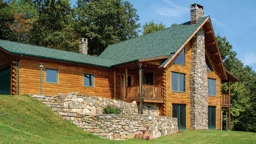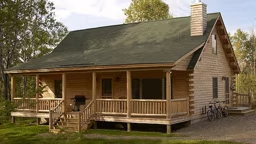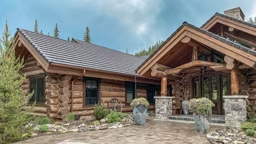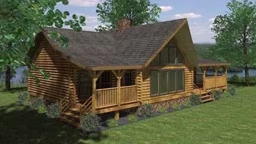
While researching options for financing your log or timber home, you’ll likely hear the phrase “purchase money loan” come up in conversation. At face value, the term is pretty self-explanatory; however, there are subtle nuances to purchase money loans beyond the obvious definition.
Purchase money loans are indeed loans that are made by a lender to a purchaser/borrower for the purpose of buying a home. In the broadest sense, the lender may be a bank, credit union, finance company, insurance company, investment company or even the individual seller of the property.
The most common purchase money loan is a conventional loan obtained through a financial institution. These loans typically involve a down payment of 20 percent of the purchase price, an analysis of the purchaser/borrower’s capacity to repay the debt via the debt-to-income ratio calculation, credit history and score, valuation of the property via appraisal and other factors.
However, programs with more flexible terms, such as a smaller down payment, do exist. Purchase money loans are available through the Federal Housing Authority (FHA), the Veterans Administration (VA), the U.S. Department of Agriculture (USDA) and other sources. Nevertheless, these programs also include certain qualifying criteria.
If the purchaser/borrower is unable to qualify for conventional financing, a purchase money loan may be available through the seller, who essentially acts as the banker in the transaction and “holds the note.” A seller may be willing to finance the purchase of real estate with a small — or even zero — down payment required. They may offer an interest rate that is higher or lower than prevailing conventional rates.
A seller also may be flexible in his or her qualifying requirements – or simply establish no other requirements at all beyond the purchaser/borrower’s willingness to enter into the contract by signing a note and security instrument that outline the terms of repayment and the property lien. Such a transaction is commonly referred to as “owner financing.” In short, everything is negotiable.
Once a purchase money loan is closed, whether through conventional means or owner financing, the terms operate essentially the same. Payments must be made according to the schedule specified, and the purchaser/borrower is typically required to maintain hazard insurance on the improvements while also assuming responsibility for the annual payment of property taxes.
The term of the note may extend until monthly payments retire the balance in full or carry a “balloon” feature, maturing with some anticipated unpaid balance. Purchasers/borrowers should be fully aware that a balloon normally requires refinancing through another loan in order to pay the balance on the original note in full.
The flexibility afforded by a purchase money loan may be something that interests you. As with every decision you’ll make on your log home journey, be sure to explore all your options and leave no stone unturned.
About the Author
Adam Headley is a writer and career banker with more than 30 years of experience in finance and lending. He has written extensively on the varied aspects of building, purchasing and owning a log or timber home.








_11868_2024-09-17_08-44-256x288.avif)


